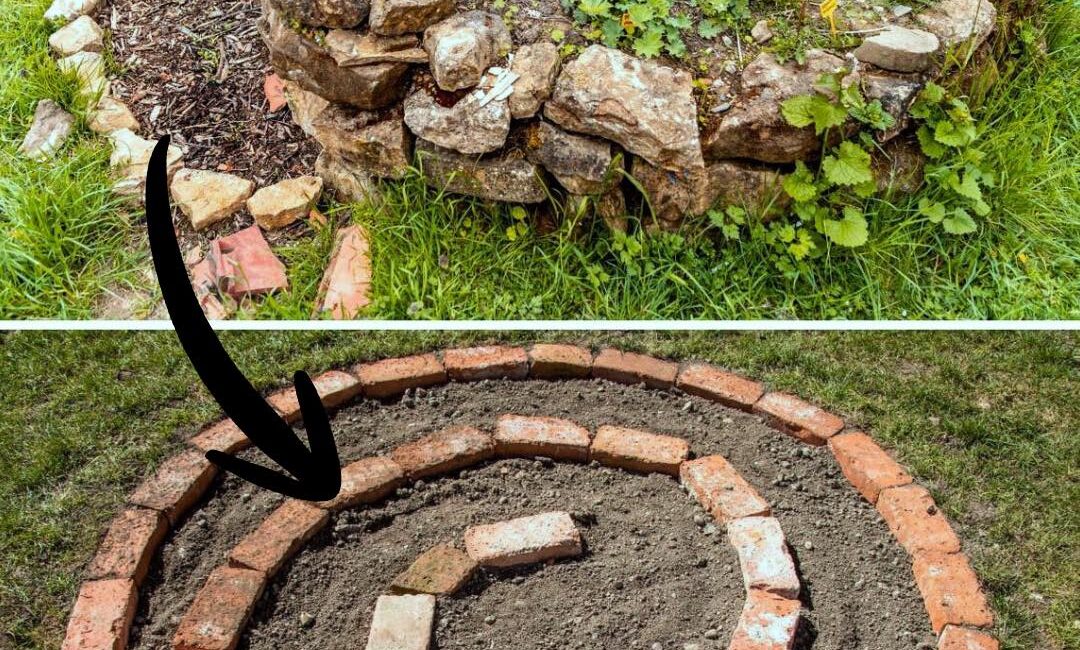The raised structure and dense planting reduce exposed soil surfaces, lowering weed germination. Additionally, planting diverse herbs close together helps prevent the spread of diseases and pests, since many herbs have natural pest-repellent properties.
8. Rapid Return on Investment
Constructing an herb spiral is relatively inexpensive and low-maintenance. With reduced water use, minimized pest control costs, and increased homegrown herb production, gardeners often see savings within one growing season. This makes the spiral not only environmentally friendly but also financially smart.
Choosing Materials and Location: Key Tips for Success
Selecting Materials
The right materials contribute to your herb spiral’s longevity and efficiency:
- Stone or brick: Durable and thermally stable, excellent for heat retention and soil insulation.
- Wood: Provides a natural aesthetic but requires treatment to resist rot.
- Recycled materials: Gabions, old bricks, or scrap wood can make eco-friendly, budget-conscious spirals.
Ideal Placement
- Ensure full sun exposure for at least 6 hours per day to maximize herb growth.
- Choose a flat, well-drained site, protected from strong winds.
- Orient the spiral with the top facing north (in the northern hemisphere) to create natural shade and optimize sun exposure.
Step-by-Step Guide to Building Your Own Herb Spiral
Step 1: Prepare the Site
Clear the area of weeds and debris. Lay down a weed barrier fabric or several layers of cardboard to suppress unwanted vegetation.
Step 2: Establish the Foundation
Create a drainage layer using gravel or small stones to prevent waterlogging at the base.
Step 3: Build the Spiral Wall
Using stones or bricks, construct a spiral wall, starting wide at the base (about 2 meters diameter) and tapering to about 80 cm to 1 meter at the top.
Step 4: Fill the Spiral
Fill the structure with a layered mix of compost-rich soil, garden loam, and sand for proper drainage. Use more sandy soil near the top and richer, moisture-retaining soil near the base.
Step 5: Plant Strategically
- Top: Mediterranean herbs like rosemary, thyme, oregano.
- Middle: Basil, parsley, chives.
- Base: Mint, lemon balm, coriander.
Step 6: Mulch and Irrigate
Apply organic mulch to reduce evaporation and help regulate soil temperature. Water primarily from the top to allow natural gravity irrigation.
Step 7: Maintain Your Spiral
Regularly prune and harvest herbs to encourage growth. Monitor soil moisture and adjust watering as needed. Rotate herbs annually to maintain soil health.
Advanced Tips for Optimizing Your Herb Spiral
- Install drip irrigation systems with timers for precise water management.
- Introduce companion flowers such as marigolds or nasturtiums to naturally deter pests.
- Consider embedding a composting core at the spiral’s center to provide heat and nutrients.
How an Herb Spiral Contributes to Sustainable Gardening and Home Value
By significantly reducing water consumption and chemical inputs, the herb spiral supports eco-friendly gardening practices. This aligns with growing trends toward sustainability and can increase property appeal for buyers interested in energy-efficient and low-maintenance landscapes.
Moreover, gardeners who grow their own herbs reduce grocery bills and plastic waste from packaged goods, making this an environmentally and economically sound choice.
Marketing Insights: Using the Herb Spiral to Boost Your Gardening Business or Blog
Visual content featuring herb spirals—before-and-after photos, time-lapse videos, and detailed guides—perform exceptionally well on social media platforms, increasing engagement and attracting an audience passionate about sustainable living and organic gardening.
Using keywords such as “water-saving garden design,” “permaculture herb garden,” and “DIY vertical garden” can drive high-quality traffic to your gardening business website or blog.
Conclusion
The herb spiral is an elegant, space-efficient, and sustainable solution that transforms any garden into a productive, beautiful, and ecologically balanced space. Whether you are an experienced gardener or a beginner, incorporating a herb spiral will maximize your growing potential, conserve water, and enhance biodiversity.
With minimal investment, low maintenance, and quick returns, the herb spiral is a smart, practical choice for anyone passionate about herbs, sustainability, and smart gardening. Start your DIY herb spiral today and enjoy fresh, fragrant herbs all year round while contributing positively to the environment.




